Ever wondered what matcha tastes like? Here you will find a complete breakdown of the flavor, varieties, benefits, and helpful tools!
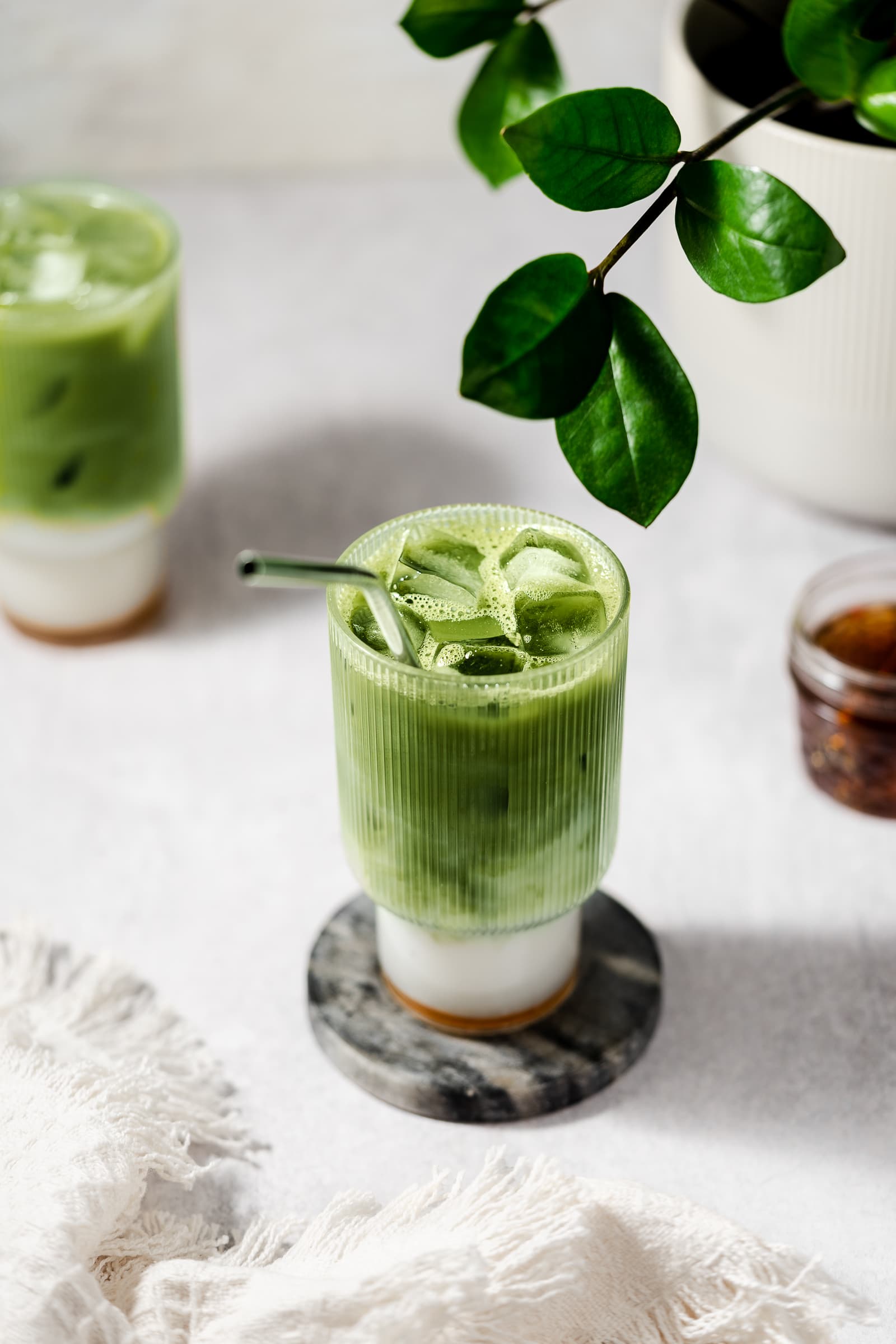
Jump to:
What is Matcha?
Matcha is made from ground green tea leaves. Unlike green tea, it is not available in a tea bag. It's ground into a fine powder, mixed with hot water, and dissolved.
Matcha originates from China but spread to Japan where it became incredibly popular. As it gained popularity in Japan, it became an essential part of Japanese culture.
Benefits
Matcha's health benefits include being high in antioxidants, boosting brain function, aiding in weight loss, and being heart-healthy!
Ceremonial vs. Culinary Grade
The main difference between ceremonial and culinary grade matcha is the season in which the leaves were harvested.
Ceremonial-grade matcha is harvested during the first harvest season when the leaves are younger. This causes the leaves to have a vibrant bright green color due to the chlorophyll content.
Culinary-grade matcha is harvested during the second harvest season. The leaves are older and have been exposed to more sunlight which can cause the leaves to be more bitter in flavor and a little more yellow in color.
Right after the leaves are harvested, they are put through a steaming process and fermentation is stopped. They are dried several times by machines to remove any moisture and finely ground into a powder.
The intended use is what you should look at when determining which kind of matcha to use.
Ceremonial-grade matcha powder is intended to be whisked with water and enjoyed on its own.
Culinary grade is typically used in baked goods, lattes, smoothies, and desserts.
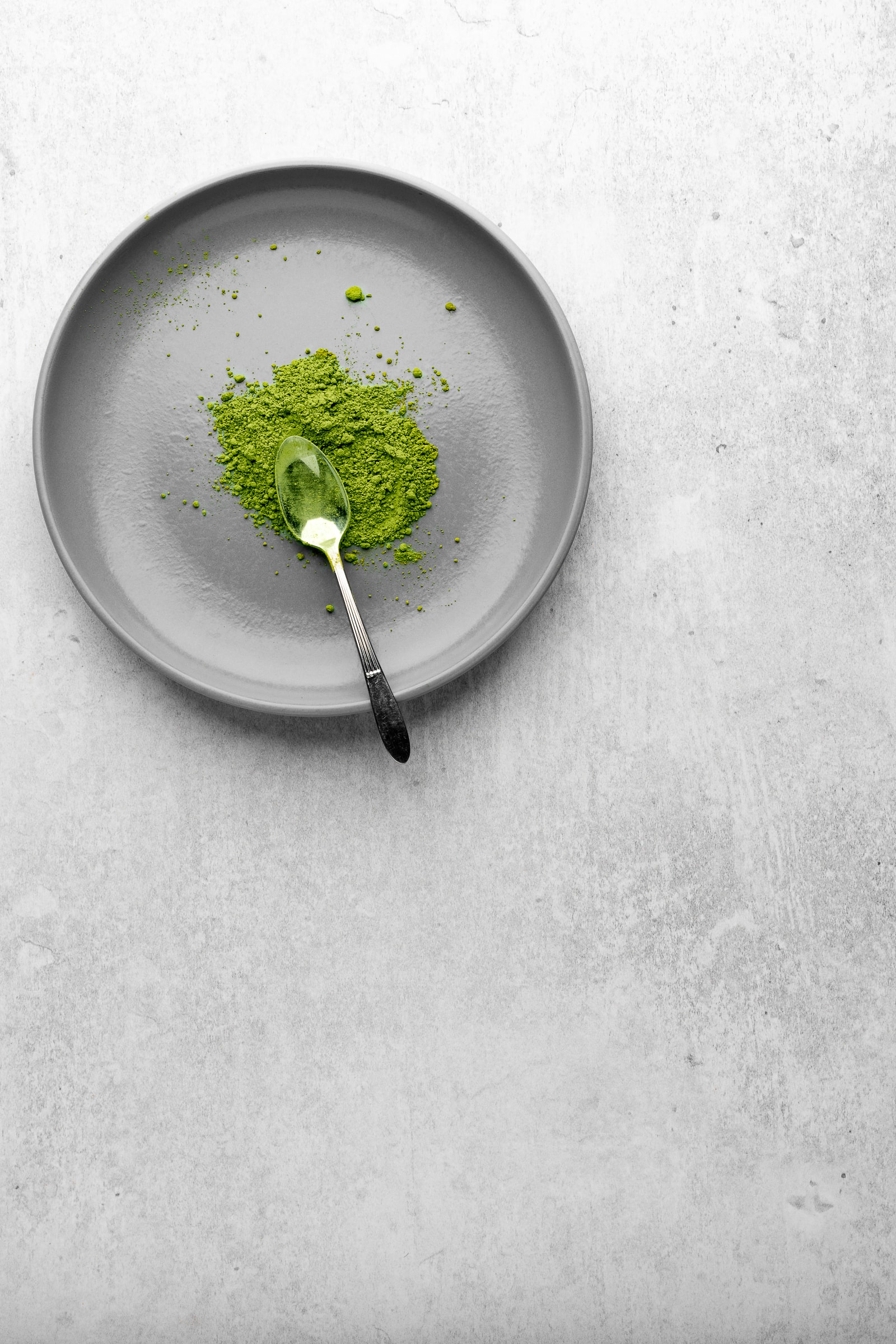
Taste
The taste of matcha depends on a few things including the grades of matcha and the quality of the matcha.
If you're drinking a good quality matcha you should notice a combination of sweet nuttiness, subtle earthiness, floral, and bitter notes.
The flavor of matcha is known for having a slightly vegetal grassy taste that can sometimes be described as an acquired taste.
Depending on the brand and quality of matcha, your experience will vary. The taste should be a combination of the notes described above as well as having a smooth mouthfeel.
If you've tried it before and didn't like it- I recommend picking a high-quality brand and giving it another go.
If it's your first time trying matcha, I recommend making a matcha latte with added sweetener.
Matcha has a unique taste, vegetal notes, and earthy flavor, and is a delicious morning or afternoon pick-me-up!
Helpful Tools
Before you make a delicious cup of matcha, you’ll need a few pieces of equipment!
Traditional matcha is whisked together to promote aeration, allowing the matcha powder and water to mix with air and giving it a thick foam on top.
To achieve this, you will want to use a bamboo whisk. This is a helpful tool to have if you're a regular matcha drinker. As an alternative, you can use a mini whisk.
A matcha scoop is nice to have to measure out the perfect amount of matcha but alternatively, you can use a teaspoon.
You'll want to sift the matcha using a small mesh strainer.
When making a matcha latte, a milk frother is a beautiful tool to have on hand. I recommend the Nespresso Aeroccino because it steams and froths hot and cold milk. Alternatively, you can use a handheld frother.
If you're interested in sets of matcha equipment, this set from Jade Leaf is incredible! It comes with a mesh strainer, a bamboo whisk, and a scoop!
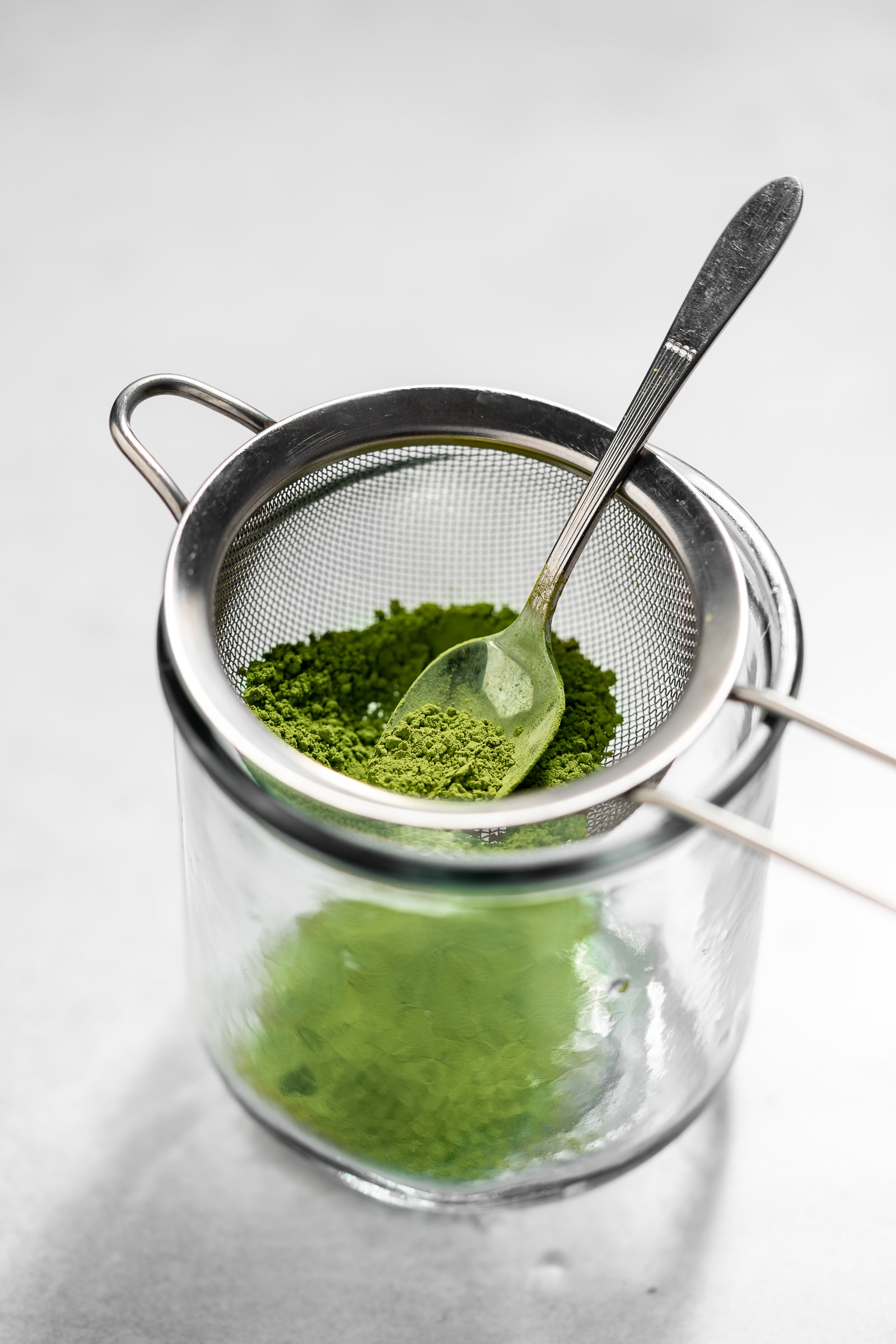
Where to Buy
In order to receive the best quality possible, you'll want to make sure you’re purchasing from companies that specialize in proper growing and processing.
High-quality ceremonial matcha is known to be pretty pricey whereas culinary is a tad more affordable.
That being said, you can find matcha at your local grocery store, tea shops, and online.
I recommend the following brands: Jade Leaf, Matcha Moon, and Ippodo.
Storing
Matcha powder should be stored in an airtight container in the fridge away from heat and moisture especially if you live in a humid climate.
Exposing the powder to oxygen will quickly deteriorate the health benefits and moisture could cause the matcha to grow mold.
How to Use
Matcha is traditionally served as a tea or as a latte but can be used in a variety of different ways!
- Make matcha tea, matcha lattes, or other matcha beverages-- it can be served iced or hot!
- Add it to baked goods like muffins, scones, or cookies.
- Mix it into chia pudding or overnight oats.
- Add it to smoothies or make matcha ice cream.
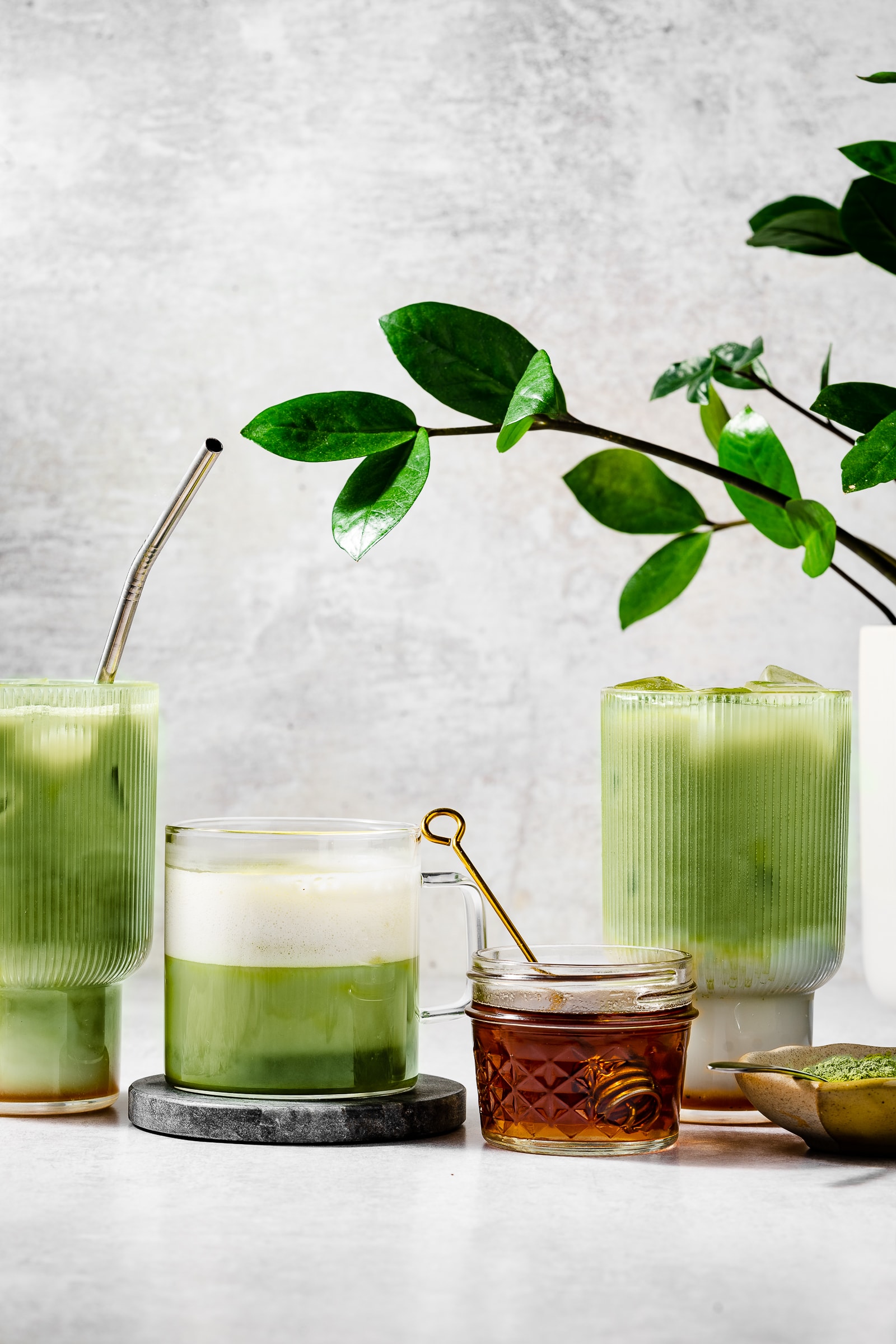
Serving Size
The perfect amount of matcha per drink will vary on personal preference. I typically use 1 teaspoon per 6 to 8 ounces of plant-based milk or water.
Matcha Recipes
Frequently Asked Questions
If you aren't a huge fan of bitterness, you may need to choose a higher-quality brand or try adding plant-based milk and sweetener to mellow out those earthy flavors.
Matcha does contain caffeine.
Vanilla, strawberry, lavender, and rose all taste great with matcha!
Matcha is stronger than green tea because you're using the entire leaf.
Making a matcha latte is incredibly simple and delicious! See my Oat Milk Matcha Latte recipe to learn how!
It has a subtle natural sweetness to it but it's not sweet like a dessert.
Matcha has a slight umami flavor that can taste slightly like seaweed. It has a bitter taste with grassy notes but shouldn't taste like fish.
In my opinion, the best way to serve matcha tea powder is in a creamy smooth almond milk or oat milk latte.
Conclusion
In conclusion, matcha is an earthy drink that can be used in a variety of different ways. It's sweet, bitter, floral, and tasty! If you've been thinking of giving matcha a go, I highly recommend it.
Start with a good matcha latte and your taste buds will thank you!
I hope this article was helpful to you and if you have any questions, leave them below!
Disclosure: This page contains some affiliate links. Please know that I may receive a percentage or commission from a link included on this page, at no extra cost to you. I will only ever recommend a product that I have used and believe has substantial value to my readers.

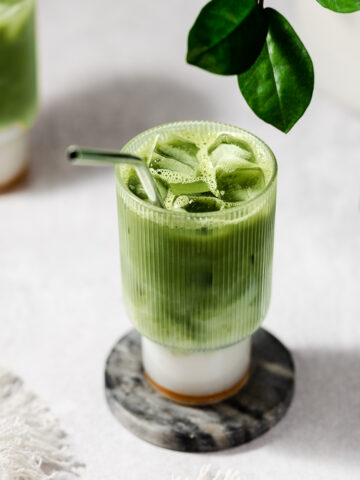
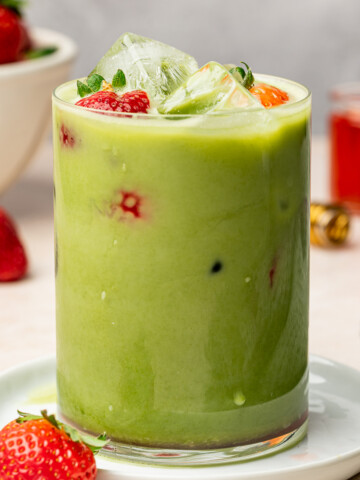

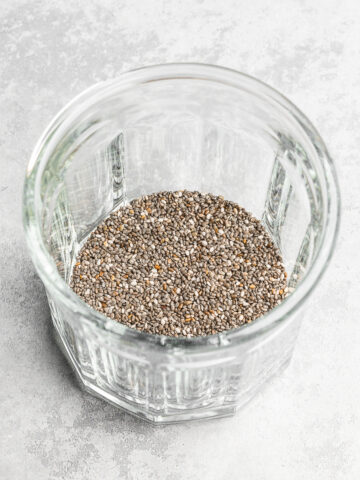
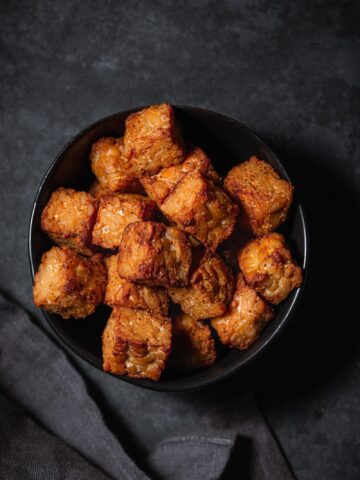
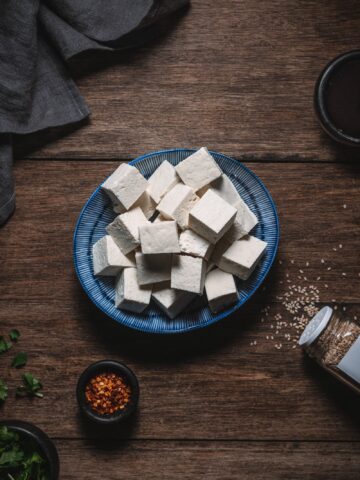
Comments
No Comments